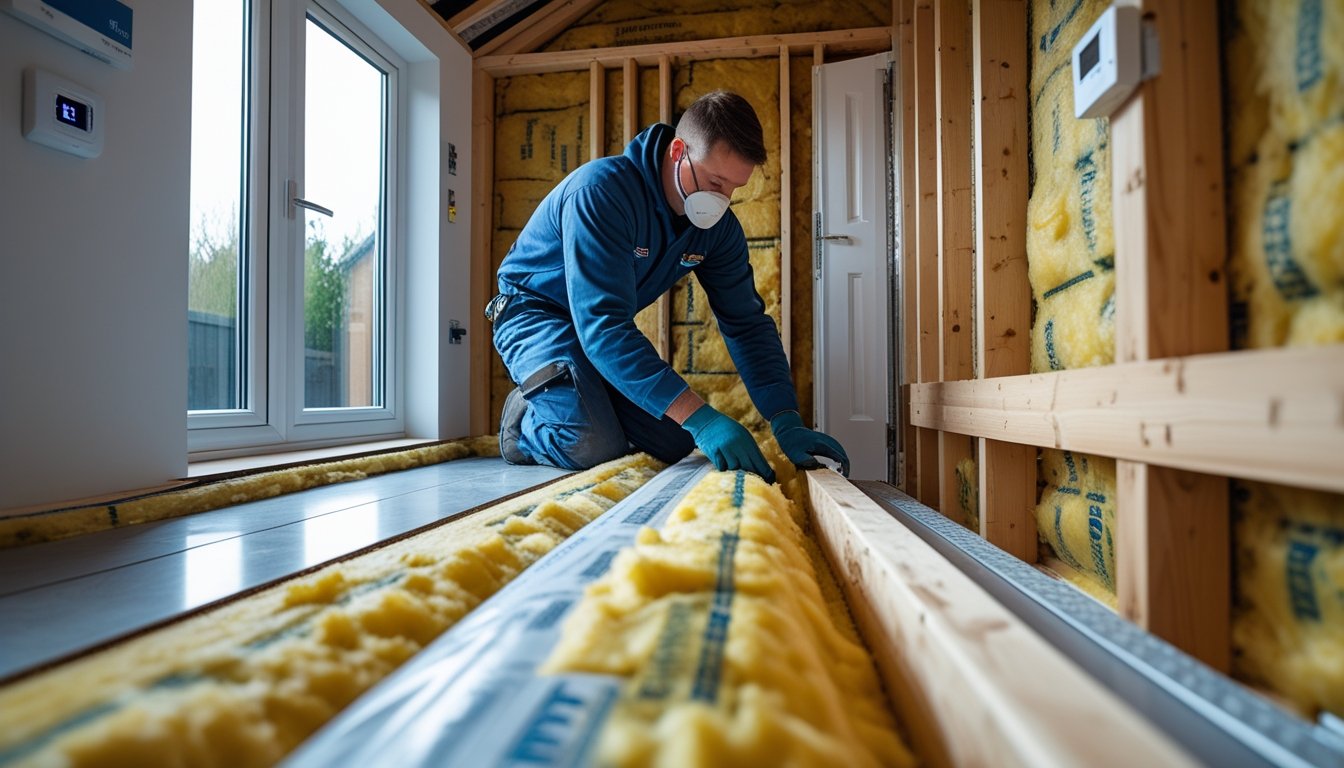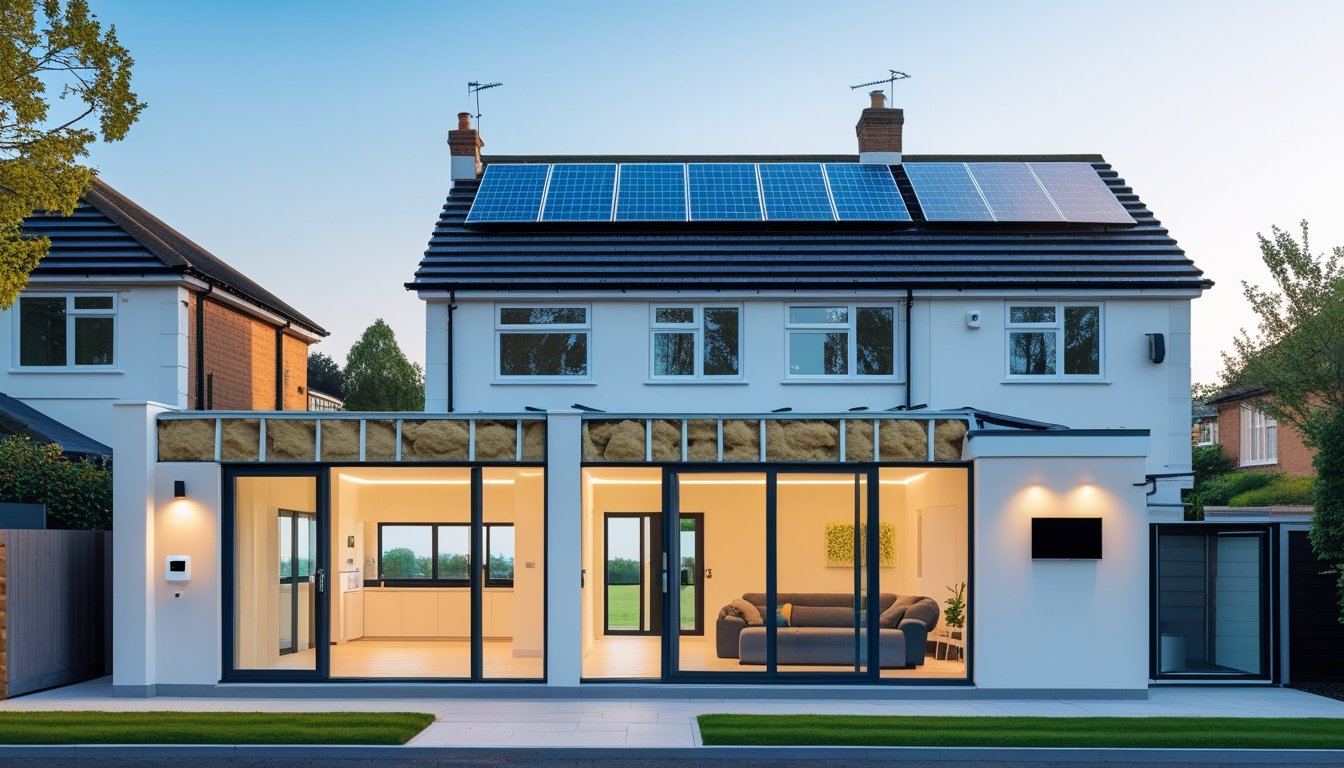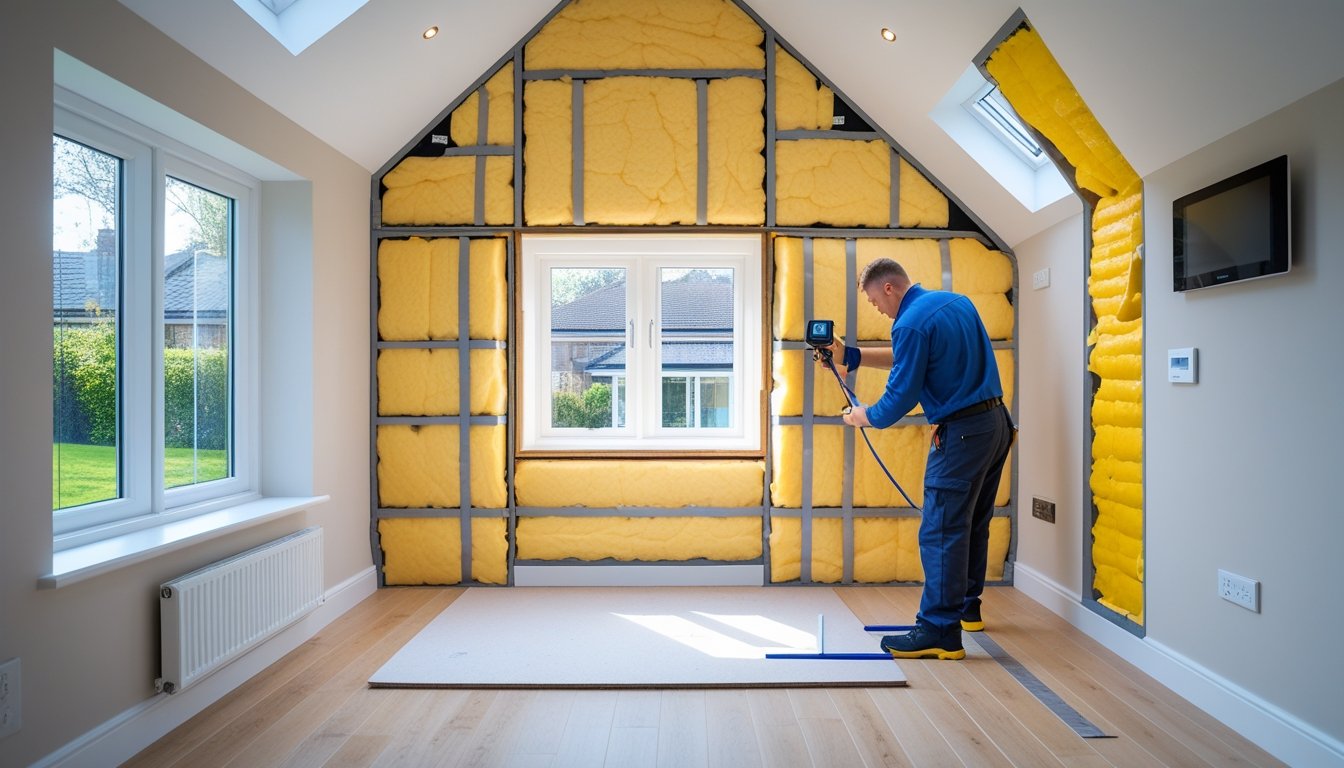Late updated: 21 Aug 2025 13:08
Written by: Oliver Bennett
Maximising Energy Efficiency In UK Home Insulation: Key Strategies and Benefits
Improving home insulation is one of the most effective ways to boost energy efficiency, save on energy bills, and reduce our carbon footprint. In the UK, where the climate includes chilly winters and cool summers, optimising insulation in our homes can lead to substantial energy savings and enhanced living comfort. Enhancing the insulation of your home can transform it into a more sustainable and cost-effective environment.

Loft insulation is a crucial component, as heat tends to escape through the roof. For homeowners, selecting the appropriate type of insulation for different parts of the building ensures maximum energy retention. With rising energy costs, the economic and environmental benefits of proper home insulation have never been more relevant.
Government schemes and green finance options support insulation upgrades. By taking steps to improve the energy efficiency of our homes, we contribute to reducing national energy consumption and tackling climate change at a personal level.
Key Takeaways
- Improving insulation increases energy efficiency significantly.
- Choosing the right insulation type is crucial for cost savings.
- Schemes exist to assist with insulation costs.
Maximising Energy Efficiency Through Home Insulation
Improving energy efficiency in UK homes relies heavily on effective insulation. This not only cuts down on energy bills but also reduces environmental impact. Let’s explore how to achieve maximum efficiency through proper insulation techniques.
Understanding Heat Loss in UK Homes
In the UK, heat loss is a significant concern, particularly in older properties. Heat escapes primarily through walls, roofs, windows, and floors. Homes built before modern building regulations often lack adequate insulation, resulting in substantial heat loss.
Loft insulation and wall insulation are crucial in reducing heat escape. By understanding the areas where heat loss is most significant, we can target improvements to maximise energy savings. Addressing these areas can lead to a more energy-efficient home and lower heating costs.
Benefits of Effective Insulation
Effective insulation offers multiple benefits. It significantly reduces heat loss, meaning homes require less energy for heating, thus lowering energy bills. Additionally, well-insulated homes contribute to a reduction in carbon emissions, aligning with environmental conservation efforts.
Insulation also enhances indoor comfort. While temperatures outside fluctuate, a well-insulated house maintains a stable internal climate. This results not only in a warmer home during the winter but also cooler conditions during the summer, improving overall liveability.
Types of Insulation Materials and Their Suitability
Various insulation materials are available, each with specific uses and benefits. Common options include fibreglass, foam board, mineral wool, and sheep’s wool. Fibreglass is widely used and cost-effective for lofts, while foam board provides excellent thermal resistance and is suited for walls.
Homes with unique needs may benefit from eco-friendly options like sheep’s wool, which is sustainable and offers excellent breathability. It's crucial to choose the right material based on the area needing insulation and specific home requirements to maximise energy efficiency.
Best Practices for Insulating Different Home Ages
Different construction ages require distinct approaches. For instance, Victorian homes often face challenges with wall insulation due to solid walls. Techniques like internal or external wall insulation are beneficial here.
For mid-20th-century homes, cavity wall insulation is effective. In newer constructions, standards are higher, but adding or improving loft and floor insulation can enhance efficiency further. By understanding and applying best practices tailored to the age of the property, we can significantly improve insulation efficiency.
Key Strategies and Upgrades for Enhanced Energy Efficiency

To boost energy efficiency in UK homes, we focus on targeted improvements like draught-proofing, optimising heating systems, and effective energy bill management. These strategies help homeowners reduce consumption, lower costs, and diminish their carbon footprint.
Draught-Proofing and Reducing Unwanted Air Leakage
Draught-proofing plays a pivotal role in enhancing energy efficiency. By sealing gaps around windows, doors, and chimneys, we prevent cold air from entering and warm air from escaping. Draught excluders and sealing strips are simple yet effective tools.
Another strategy is to enhance the insulation of doors and windows. Utilising heavy curtains and secondary glazing can significantly reduce heat loss. By reducing air leakage, we maintain a stable indoor temperature, decreasing the reliance on heating systems and subsequently reducing energy bills.
Optimising Heating Systems and Radiators
Upgrading our heating systems is crucial for efficiency. Consider replacing old boilers with high-efficiency gas condensing boilers or electric models like the Vitotron 100. These options optimise heat output while minimising waste.
Installing thermostatic radiator valves allows for precise temperature control in each room. Additionally, heat pumps present an efficient alternative, leveraging natural heat sources to warm our homes. Seeking a new boiler quote can guide us towards more economically and environmentally friendly options.
Monitoring and Managing Energy Bills for Ongoing Savings
Keeping a close eye on our energy bills is essential for long-term savings. By analysing usage patterns, we can identify inefficiencies and adjust our habits accordingly. Smart meters offer real-time insights, enabling more mindful consumption.
Aligning with the Department for Energy Security and Net Zero initiatives, taking advantage of government schemes for energy-efficient upgrades can also help reduce costs. Monitoring our consumption not only supports financial savings but also contributes to a reduced carbon footprint, aligning with wider sustainability goals.
Frequently Asked Questions

In this section, we'll address several common concerns related to home insulation. We'll delve into installation practices, explore financial support options, and review different materials to help homeowners enhance their home's energy efficiency.
What are the essential do's and don'ts when installing loft insulation?
When installing loft insulation, follow best practices by ensuring proper ventilation to prevent condensation. Avoid compressing insulation material, as this diminishes its effectiveness. Make sure to leave gaps around electrical fittings and light fixtures to prevent overheating and potential fire hazards.
How can homeowners access government grants or schemes for home insulation in the UK?
There are various government grants and schemes available to UK homeowners, designed to support insulation projects. One notable programme is the Energy Company Obligation (ECO), which provides funding for energy-efficient home improvements. Homeowners can check their eligibility by contacting services like the Energy Advice Helpline or visiting government websites.
What is the most cost-effective method to insulate a home?
One of the most cost-effective methods of insulation is loft insulation. By insulating the loft, homeowners can significantly reduce heat loss, leading to lower energy bills. Depending on the property, cavity wall insulation can also be an economical option, paying for itself in savings within a few years.
What are the best materials for loft insulation specifically between rafters?
For insulating between rafters, rigid foam boards or semi-rigid fibreglass batts are excellent choices. These materials fit snugly between rafters, providing effective thermal resistance. Ensure to seal any gaps properly to maximise efficiency and prevent air leakage.
How can one minimise thermal bridging and heat loss in a residential property?
To reduce thermal bridging, ensure continuity in insulation layers, avoiding gaps at junctions and corners. Use insulating spacers or clips for attachments that pierce insulation, and consider adding an additional insulation layer externally to existing walls, if feasible.
What strategies are most effective for reducing heat loss in homes?
Effective strategies to reduce heat loss include investing in insulated doors and double or triple-glazed windows. Draught-proofing and using thick curtains add additional layers of warmth. For floors, consider insulation boards or underfloor systems to maintain heat throughout cold months. These measures collectively enhance comfort and significantly decrease energy consumption.
